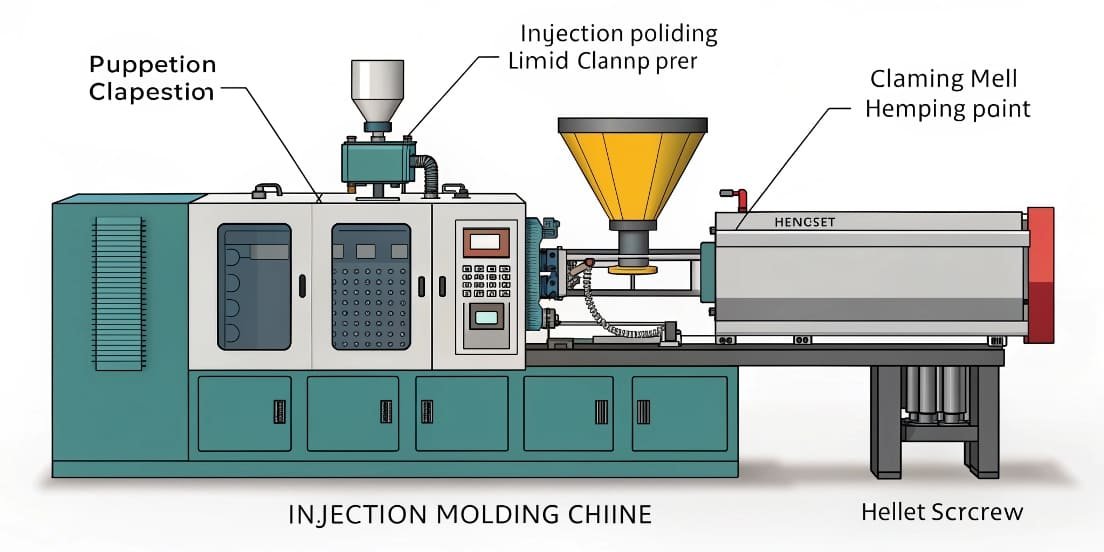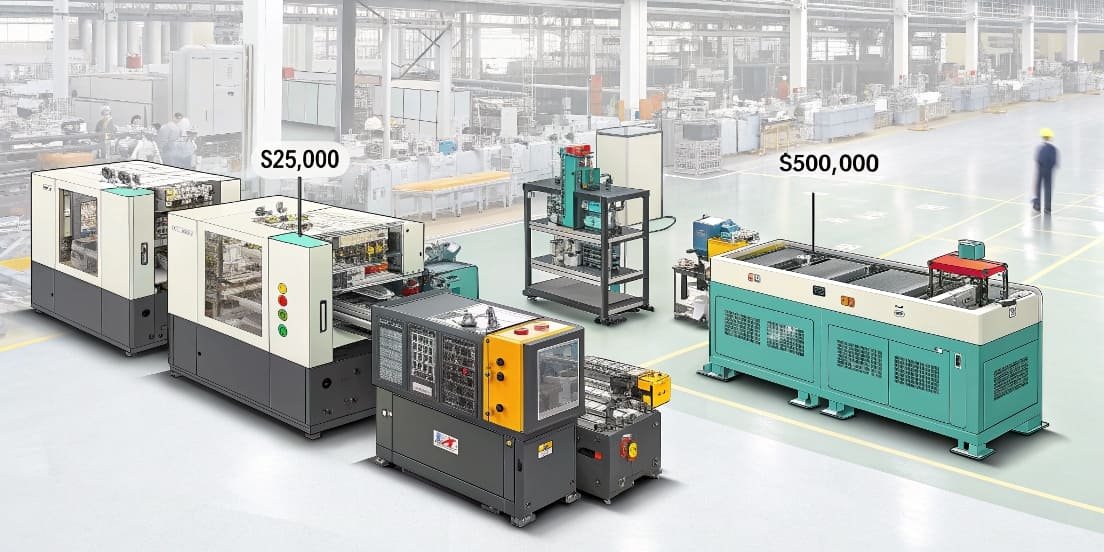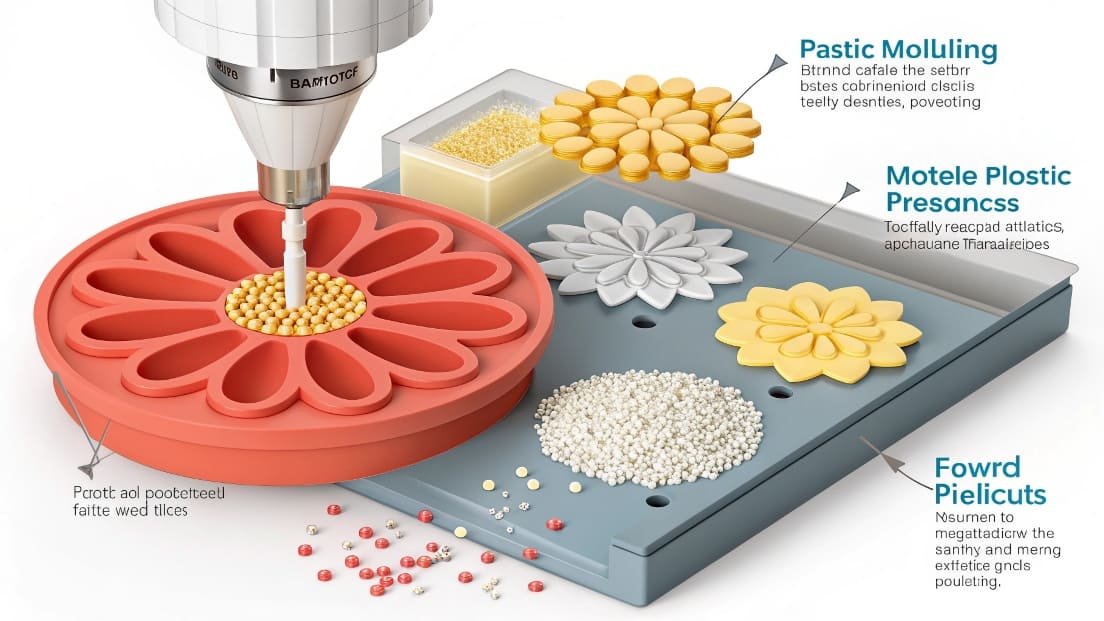How to Master Mold Design for Plastic Products?
Struggling to keep your mold designs ahead of the curve? These small knowledge gaps can lead to big production headaches. Let’s explore a clear path to true mold design mastery.
Mastering mold design requires a deep understanding of plastic material properties1, especially shrinkage. You must also master core design principles like gating, venting, and cooling systems2. Continually updating your knowledge with the latest manufacturing technologies is key to ensuring efficient, high-quality production.

You probably have the basics down, but true mastery is in the details. It's about turning good designs into great ones that run smoothly and save money. So, where do we start? The most common point of failure for many designers is understanding the plastic material itself. Let's break down how to truly get a handle on it.
How Do You Accurately Calculate Plastic Shrinkage?
Miscalculated shrinkage leading to parts that don't fit? This common error causes costly reworks and project delays. Let’s nail down the factors for accurate shrinkage calculation3 from the start.
Accurately calculate plastic shrinkage by considering the material type, injection pressure4, part thickness, and mold temperature. Use material supplier data sheets5 as a starting point. Then refine your calculations based on these specific factors to get it right for your project.

Getting shrinkage right is more than just plugging in a number from a datasheet. In my early days, I learned this the hard way on a project involving a consumer electronics housing. The spec sheet gave a single shrinkage value, but we didn't account for the different wall thicknesses. The final parts warped and failed assembly. It was a costly lesson in the importance of detail. True accuracy comes from understanding the interacting factors.
Key Factors Influencing Shrinkage
The material's data sheet is your starting point, not the final word. You must adjust for your specific application.
- Material Type: Amorphous plastics (like PC) shrink less and more uniformly than crystalline plastics6 (like PP), which shrink more due to their ordered molecular structure.
- Processing Conditions: Higher injection pressure4 packs more material into the mold, reducing shrinkage. Higher melt and mold temperatures can also affect the final rate.
- Part Geometry: Thicker sections cool slower and shrink more than thinner sections. This differential shrinkage can cause warpage.
Here is a simple reference table for common materials:
| Plastic Material | Typical Shrinkage Range (%) | Key Consideration |
|---|---|---|
| ABS | 0.4 - 0.7 | Low, consistent shrinkage. Good for tolerance control. |
| Polycarbonate (PC) | 0.5 - 0.7 | Very low and predictable. Excellent for precision parts. |
| Polypropylene (PP) | 1.0 - 2.5 | High shrinkage. Requires careful mold design. |
| Nylon (PA66) | 0.8 - 2.0 | High shrinkage, very sensitive to moisture content. |
What’s the Best Gating Strategy for Your Part?
Choosing the wrong gate can cause cosmetic defects like flow marks or structural issues like weld lines. These problems can ruin a production run, forcing you to troubleshoot under pressure.
The best gating strategy depends on your part's geometry, material, and cosmetic requirements. The goal is to fill the cavity uniformly while minimizing defects. Common types include edge gates for simple parts and hot runner systems7 for complex, high-volume production.

I remember working with a client on a clear acrylic display case. The design was beautiful, but the initial mold used a simple edge gate. This left a very visible blemish on the most important cosmetic surface. The parts were functional but unsellable. We had to modify the mold to use a submarine (tunnel) gate that placed the mark on a hidden edge. This small change saved the entire project. Choosing your gate isn't just a technical decision; it's a product decision. It directly impacts the final look, feel, and performance of the part you deliver.
Common Gate Types and Their Uses
Your choice of gate affects flow pattern, part cosmetics, and cycle time.
- Direct (Sprue) Gate: Connects the sprue directly to the part. Simple and low-cost, but leaves a large mark. Best for single-cavity molds where cosmetics are not a concern.
- Edge Gate: Located on the parting line of the mold. Easy to implement and degate, but can cause flow lines. Good for flat parts.
- Submarine (Tunnel) Gate: Fills the part from below the parting line and automatically shears off during ejection. Excellent for hiding gate marks and enabling automatic cycling.
- Hot Runner/Hot Tip Gate: Delivers molten plastic directly to the part, eliminating the runner system. Reduces material waste and cycle times but increases mold complexity and cost. Ideal for high-volume production.
Here’s a quick guide to help you choose:
| Gate Type | Cost | Cosmetic Impact | Degating | Best For |
|---|---|---|---|---|
| Direct (Sprue) | Low | High | Manual | Single-cavity, non-cosmetic parts. |
| Edge | Low | Medium | Manual | Flat parts, multi-cavity molds. |
| Submarine | Medium | Low | Automatic | High-volume parts where gate mark must be hidden. |
| Hot Runner | High | Low/None | Automatic | High-volume, complex parts with no waste. |
How Can You Optimize Mold Cooling for a Faster Cycle?
Slow cycle times are a hidden profit killer. If your cooling system is inefficient, each part takes longer to make, driving up costs and delaying delivery schedules for your client.
To optimize mold cooling, place cooling channels close to the part surfaces, especially hot spots like thick sections. Use turbulent water flow for maximum heat transfer and consider conformal cooling8 lines that follow the part's shape for complex geometries.
<sup id=](https://ani-a.com/wp-content/uploads/2025/08/machine-1.jpg) 8 channels wrapping around a part" title="Optimizing Mold Cooling Channels" />
8 channels wrapping around a part" title="Optimizing Mold Cooling Channels" />
Cooling often makes up more than two-thirds of the total injection molding cycle time. I’ve seen many designers treat it as an afterthought. They just run straight channels through the mold block wherever there is space. This approach is a huge mistake. We once helped a client reduce their cycle time from 45 seconds to 30 seconds just by re-designing the cooling layout. We added extra circuits near a thick rib and used a bubbler to cool a deep core pin. That 15-second reduction saved them thousands of dollars over the production run. Effective cooling isn't an option; it's a requirement for competitive manufacturing.
Core Principles for Effective Cooling Design
Your goal is to remove heat from the plastic part as quickly and evenly as possible.
- Placement is Everything: Channels should be as close to the cavity surface as possible without compromising the mold's structural integrity. A good rule of thumb is to place the channel center 1.5 to 2 times the channel's diameter away from the molding surface.
- Ensure Turbulent Flow: Laminar (smooth) flow is a poor conductor of heat. You need to design for turbulent flow inside the channels to maximize heat exchange. This is achieved by ensuring a sufficient flow rate.
- Target the Hot Spots: Thick sections, corners, and ribs hold heat longer. Use dedicated features like baffles, bubblers, or thermal pins to pull heat from these problem areas specifically.
- Consider Conformal Cooling: For high-end molds with complex part geometry9, conformal cooling8 is a game-changer. These channels follow the contours of the part, providing incredibly uniform and fast cooling. Though more expensive to build, the cycle time savings can be massive.
Conclusion
Mastering mold design means focusing on materials, core principles like gating and cooling, and never stopping the learning process. These details make the difference between a good product and a great one.
Tokens: 2440
Understanding plastic material properties is crucial for effective mold design and ensuring product quality. ↩
Optimizing cooling systems can drastically reduce cycle times and improve production efficiency. ↩
Accurate shrinkage calculation is vital to avoid costly reworks and ensure parts fit correctly. ↩
Injection pressure plays a critical role in material flow and part quality during the molding process. ↩
Material supplier data sheets provide essential information for accurate shrinkage and material behavior. ↩
Knowledge of crystalline plastics is important for managing shrinkage and part performance. ↩
Hot runner systems can reduce waste and improve cycle times, making them ideal for high-volume production. ↩
Conformal cooling can enhance cooling efficiency and reduce cycle times for complex parts. ↩
Part geometry significantly affects shrinkage and must be carefully considered in the design process. ↩